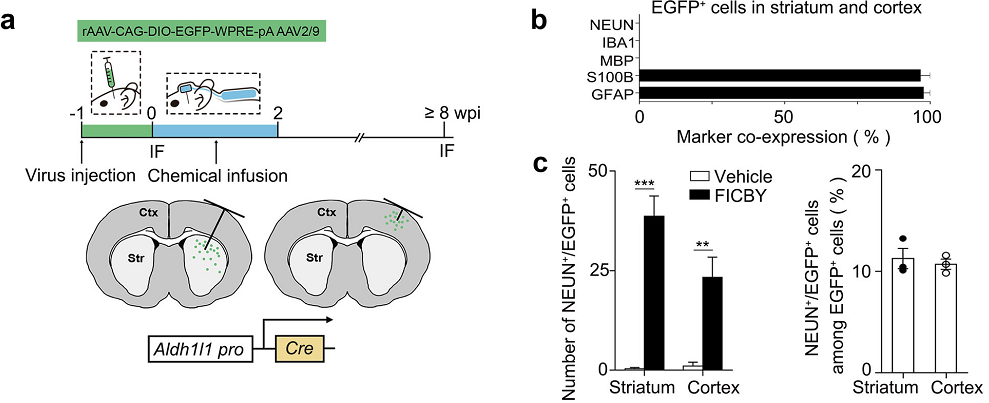rAAV-CAG-Dio was used to trace the astrocytes. AAV-vGLUT2 was used to label glutamatergic neurons in the cortex. rAAV-vGAT was used to label GABAergic neurons in the striatum. AAV-hSyn was used to label resident neurons RV and AAV tracing helper were used for RABV tracing experiments to trace the astrocytes (All viruses used in this study were from
BrainVTA)
The viruses used in this article from BrainVTA are in the table below
|
Control |
PT-0168 AAV-CAG-Dio-EGFP-WPRE-pA
PT-0325 AAV-vGAT-mCherry-WPRE-pA
AAV-vGLUT2-mCherry-WPRE-hGH
PT-0241 AAV-hSyn-EGFP-WPRE-pA |
|
CRE Recombinase |
PT-0562 AAV-CAG-Cre |
|
Tracing Helper |
PT-0095 AAV-EF1α-DIO-His-EGFP-2a-TVA-WPRE-pA
PT-0023 AAV-EF1α-DIO-RVG-WPRE-pA |
|
RV |
RABV-ENVA-ΔG-DsRed |
Yantao Ma, Handan Xie, Xiaomin Du, Lipeng Wang, Xueqin Jin, Qianqian Zhang, Yawen Han, Shicheng Sun, Longteng Wang, Xiang Li, Changjiang Zhang, Mengdi Wang, Cheng Li, Jun Xu, Zhuo Huang, Xiaoqun Wang, Zhen Chai, Hongkui Deng
Pub Date: 2021-03-02,
DOI: 10.1038/s41421-021-00243-8,
Email: sales@brainvta.com
In mammals, many organs lack robust regenerative abilities. Lost cells in impaired tissue could potentially be compensated by converting nearby cells in situ through in vivo reprogramming. Small molecule-induced cell reprogramming offers a temporally flexible and non-integrative strategy for altering cell fate, which is, in principle, favorable for in vivo reprogramming in organs with notoriously poor regenerative abilities, such as the brain. Here, we demonstrate that in the adult mouse brain, small molecules can reprogram astrocytes into neurons. The in situ chemically induced neurons resemble endogenous neurons in terms of neuron-specific marker expression, electrophysiological properties, and synaptic connectivity. Our study demonstrates the feasibility of in vivo chemical reprogramming in the adult mouse brain and provides a potential approach for developing neuronal replacement therapies.
 Figure 1. In vivo chemical induction of resident astrocytes into CiNs in conditional lineage-tracing system.
Figure 1. In vivo chemical induction of resident astrocytes into CiNs in conditional lineage-tracing system.
In this study, the authors developed an in vivo chemical approach that could reprogram resident astrocytes into neurons with synaptic connectivity in the adult mouse brain. Which provides a potential approach for developing neuronal replacement therapies.
BrainVTA offers viral vector construction & virus packaging services for AAV, LV, RABV, PRV, HSV and VSV that help researchers explore questions about genes, neurons, circuitry structure, function of brain network, mechanism and treatment of diseases.
If you have any needs, just email us at
sales@brainvta.com.
